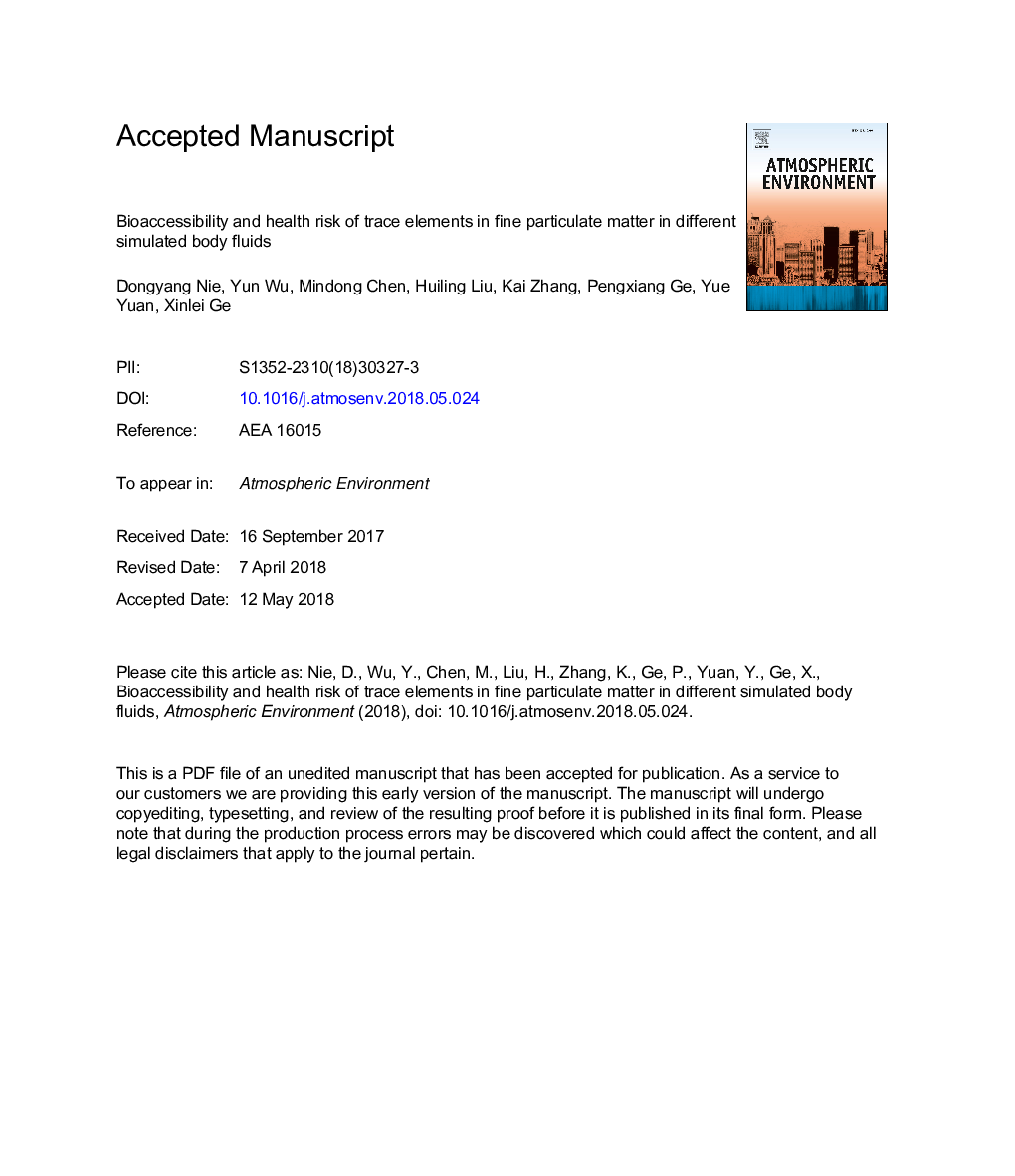| Article ID | Journal | Published Year | Pages | File Type |
|---|---|---|---|---|
| 8863661 | Atmospheric Environment | 2018 | 30 Pages |
Abstract
Health risk assessment of trace elements (TrElems) in fine particulate matter (PM2.5) has been studied based on the total element concentrations or more recently on the phosphate buffered saline (PBS)-soluble concentrations. However, behaviors of the TrElems released from PM2.5 change considerably as the interacting media change. In this study, the bioaccessibility of particulate-bound TrElems (V, Mn, Co, Ni, Cu, As, Cd and Pb) were investigated using three kinds of simulated body fluids, artificial lung fluid (ALF), artificial sweat (AS), and artificial gastric juice (AGJ), comparing with the commonly used PBS. Many TrElems, especially Pb, showed lower solubility in PBS than that in other fluids. Cu, Mn, V and As were observed to be the most soluble TrElems in all simulated body fluids. Carcinogenic and non-carcinogenic effects were evaluated using ALF, AS and AGJ-soluble fractions (representing the corresponding exposure routes: inhalation, dermal contact and ingestion) according to the United States Environmental Protection Agency (USEPA) human health risk assessment model. The carcinogenic risks of As and Pb were higher than 1â¯Ãâ¯10â6 (the acceptable level) for both adults and children. High hazard quotient (HQ) values for As and Pb were also observed for children, indicating a potential non-carcinogenic risk posed by these toxic elements. Our results demonstrated that the health risks of particulate-bound TrElems might be misjudged if using the PBS-soluble or total element contents alone.
Related Topics
Physical Sciences and Engineering
Earth and Planetary Sciences
Atmospheric Science
Authors
Dongyang Nie, Yun Wu, Mindong Chen, Huiling Liu, Kai Zhang, Pengxiang Ge, Yue Yuan, Xinlei Ge,
